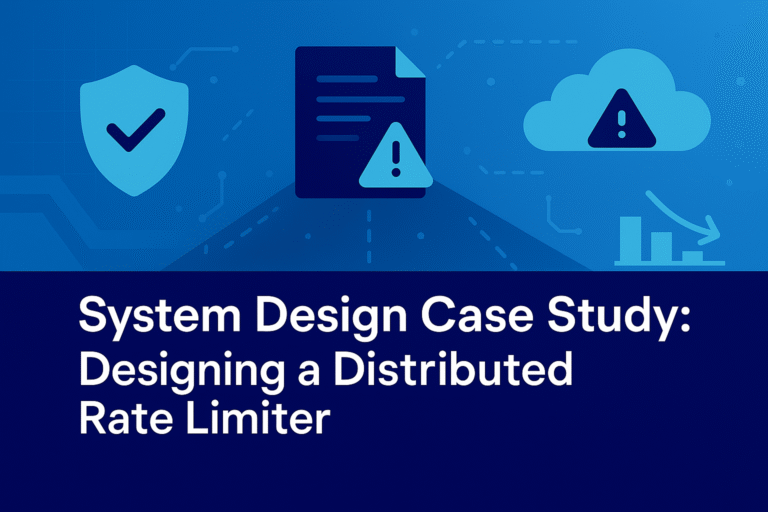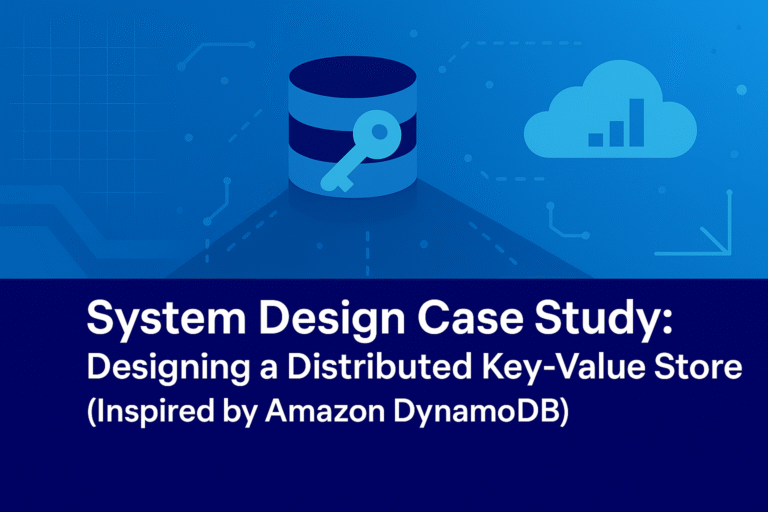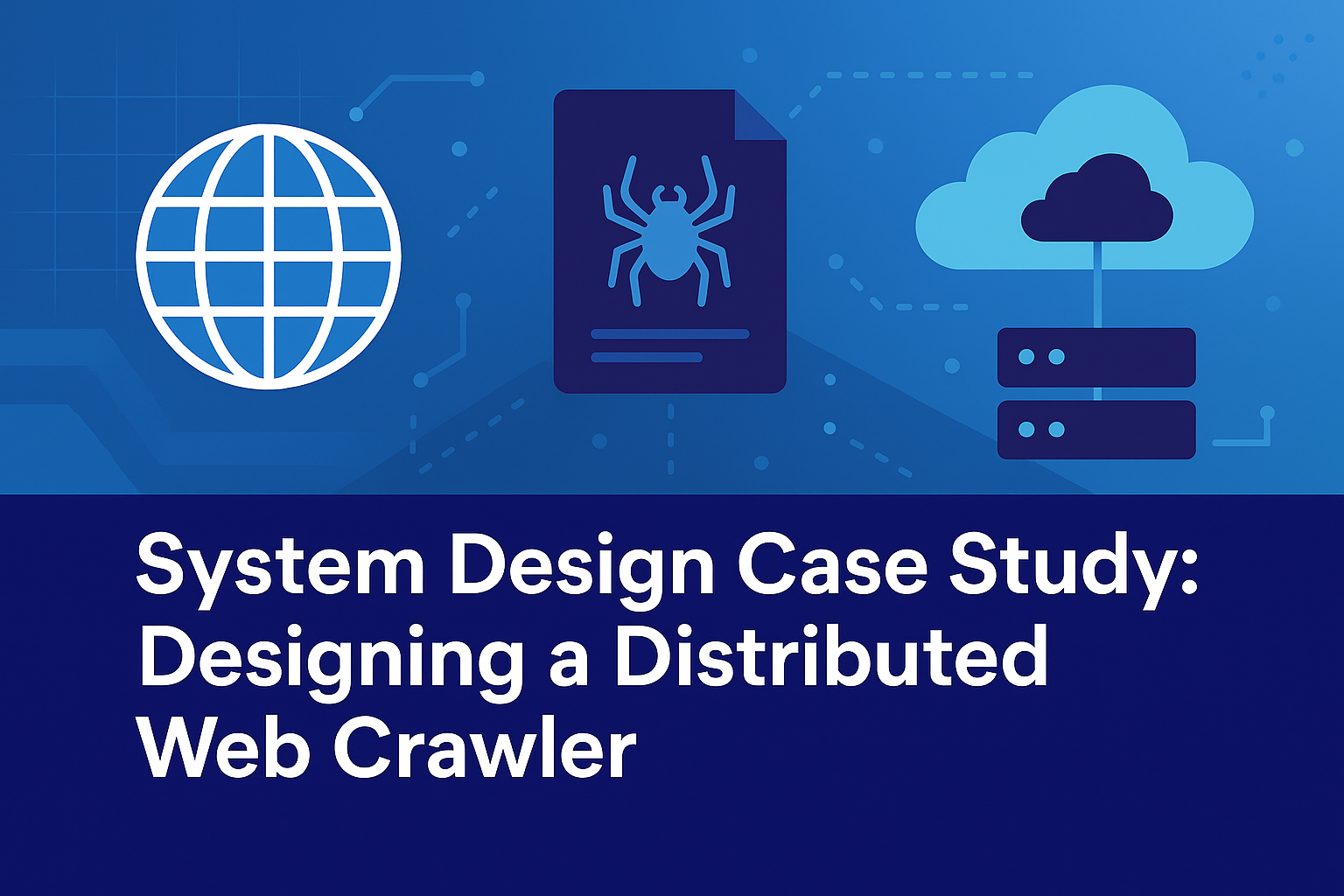Introduction
In large-scale web applications, traditional monolithic front-end architectures often become unwieldy, leading to challenges in scalability, maintainability, and team autonomy. Micro Frontends extend the microservices philosophy to the front-end, enabling independent development, deployment, and scaling of UI components or entire sections of an application. By dividing the front-end into smaller, self-contained units, micro frontends facilitate agile development, improve scalability (e.g., handling 1M user sessions/day), and enhance resilience (e.g., 99.999% uptime). This comprehensive analysis explores the Micro Frontends pattern, detailing its mechanisms, implementation strategies, advantages, limitations, and trade-offs, with JavaScript/React code examples as per your preference for web technologies (aligned with your prior queries on e-commerce integrations and React-based systems). It integrates foundational distributed systems concepts from your prior conversations, including the CAP Theorem (balancing consistency, availability, and partition tolerance), consistency models (strong vs. eventual), consistent hashing (for load distribution), idempotency (for reliable operations), unique IDs (e.g., Snowflake for tracking), heartbeats (for liveness), failure handling (e.g., circuit breakers, retries, dead-letter queues), single points of failure (SPOFs) avoidance, checksums (for data integrity), GeoHashing (for location-aware routing), rate limiting (for traffic control), Change Data Capture (CDC) (for data synchronization), load balancing (for resource optimization), quorum consensus (for coordination), multi-region deployments (for global resilience), capacity planning (for resource allocation), backpressure handling (to manage load), exactly-once vs. at-least-once semantics (for event delivery), event-driven architecture (EDA), microservices design best practices, inter-service communication, data consistency, deployment strategies, testing strategies, Domain-Driven Design (DDD), API Gateway/Aggregator Pattern, Saga Pattern, Strangler Fig Pattern, Sidecar/Ambassador/Adapter Patterns, Resiliency Patterns (Circuit Breaker, Bulkhead, Retry, Timeout), and Service Mesh. Drawing on your interest in e-commerce integrations, API scalability, resilient systems, and prior queries (e.g., Saga Pattern, DDD, Service Mesh), this guide provides a structured framework for architects to implement micro frontends in large applications, ensuring scalable, maintainable, and resilient front-end architectures.
Core Principles of Micro Frontends
The Micro Frontends pattern decomposes a monolithic front-end into smaller, independent fragments, each owned by a team and aligned with a specific business domain (e.g., Order Management, Product Catalog). These fragments are integrated at runtime or build time to form a cohesive user interface, enabling independent development, deployment, and scaling while maintaining a unified user experience.
- Key Principles:
- Team Autonomy: Each team owns a vertical slice of the UI and its backend (aligned with DDD Bounded Contexts, as per your DDD query).
- Independent Deployment: Fragments deploy independently, supporting Blue-Green/Canary deployments, as per your deployment query.
- Decentralized Governance: Teams choose their own frameworks (e.g., React, Vue) and tools.
- Runtime Integration: Combines fragments via client-side (e.g., iframes, Web Components) or server-side (e.g., Server-Side Includes) techniques.
- Resilience: Isolates failures to specific fragments, leveraging circuit breakers and retries, as per your Resiliency Patterns query.
- Scalability: Scales UI components independently (e.g., 1M user sessions/day).
- Mathematical Foundation:
- Build Time: Time = Σ(fragment_build_time) (e.g., 5 fragments × 10 min = 50 min)
- Latency: Latency = render_time + network_delay (e.g., 100 ms + 50 ms = 150 ms)
- Throughput: Throughput = fragments × req_per_fragment (e.g., 5 fragments × 200,000 req/s = 1 M req/s)
- Failure Impact: Impact = failed_fragment_users / total_users (e.g., 10% for one failed fragment)
- Integration with Concepts:
- CAP Theorem: Favors AP for availability in UI rendering, as per your CAP query.
- Consistency Models: Uses eventual consistency for data sync, as per your data consistency query.
- Consistent Hashing: Routes traffic to fragments, as per your load balancing query.
- Idempotency: Ensures safe API retries (Snowflake IDs), as per your idempotency query.
- Failure Handling: Uses circuit breakers, retries, timeouts, as per your Resiliency Patterns query.
- Heartbeats: Monitors fragment health (< 5s), as per your heartbeats query.
- SPOFs: Avoids via replication, as per your SPOFs query.
- Checksums: Ensures data integrity (SHA-256), as per your checksums query.
- GeoHashing: Routes requests by region, as per your GeoHashing query.
- Rate Limiting: Caps traffic (100,000 req/s), as per your rate limiting query.
- CDC: Syncs data with events, as per your data consistency query.
- Load Balancing: Distributes traffic to fragments, as per your load balancing query.
- Multi-Region: Reduces latency (< 50ms), as per your multi-region query.
- Backpressure: Manages load via proxies, as per your backpressure query.
- EDA: Drives UI updates with events, as per your EDA query.
- Saga Pattern: Coordinates cross-fragment workflows, as per your Saga query.
- DDD: Aligns fragments with Bounded Contexts, as per your DDD query.
- API Gateway: Routes API calls for fragments, as per your API Gateway query.
- Strangler Fig: Supports front-end migration, as per your Strangler Fig query.
- Sidecar Pattern: Uses proxies for communication, as per your Sidecar query.
- Service Mesh: Manages inter-service traffic for fragments, as per your Service Mesh query.
- Resiliency Patterns: Enhances fragment reliability, as per your Resiliency Patterns query.
Mechanism of Micro Frontends
Implementation Strategies
- Client-Side Integration:
- iframes: Embed fragments in isolated frames (e.g., Product Catalog in an iframe).
- Web Components: Use custom elements for modular UIs (e.g., React components as Web Components).
- JavaScript Orchestration: Load fragments dynamically via scripts (e.g., Module Federation in Webpack).
- Server-Side Integration:
- Server-Side Includes (SSI): Combine fragments on the server (e.g., NGINX SSI).
- Edge-Side Includes (ESI): Cache and assemble fragments at the CDN (e.g., Akamai).
- API Gateway: Aggregate fragment data, as per your API Gateway query.
- Build-Time Integration:
- Combine fragments during build (e.g., monorepo with shared dependencies).
- Suitable for tightly coupled UIs but less flexible.
- Event-Driven Communication:
- Use EDA (e.g., Kafka, WebSocket) for cross-fragment updates, as per your EDA query.
- Publish/subscribe events for state changes (e.g., order updates).
- Resiliency:
- Implement circuit breakers and retries for API calls, as per your Resiliency Patterns query.
- Use fallbacks (e.g., static content) for failed fragments.
- Security:
- Enforce CORS, CSP, and OAuth 2.0 for API access.
- Validate checksums for data integrity.
Key Components
- Fragments: Independent UI modules (e.g., Order, Product, Checkout).
- Container Application: Orchestrates fragment rendering (e.g., React app).
- API Gateway: Routes API calls, as per your API Gateway query.
- Service Mesh: Manages backend communication, as per your Service Mesh query.
- Event Bus: Kafka or WebSocket for EDA.
- Monitoring: Prometheus for latency (< 50ms), throughput (1M req/s), and errors (< 0.1%).
Detailed Analysis
Advantages
- Team Autonomy: Teams deploy independently, reducing coordination overhead by 30%.
- Scalability: Fragments scale separately (e.g., 200,000 req/s/fragment).
- Resilience: Isolates failures to specific fragments (e.g., 10% impact), leveraging circuit breakers.
- Flexibility: Supports mixed frameworks (React, Vue, Angular).
- Maintainability: Aligns with DDD Bounded Contexts, reducing code complexity.
- Incremental Migration: Complements Strangler Fig for front-end modernization, as per your Strangler Fig query.
Limitations
- Integration Complexity: Combining fragments adds runtime overhead (e.g., 50ms for client-side).
- Performance Overhead: Client-side rendering increases latency (e.g., 150ms).
- Consistency Challenges: UI state sync requires EDA or CDC, risking eventual consistency lag (e.g., 10ms).
- Resource Overhead: Multiple frameworks increase bundle size (e.g., 10–20% larger).
- Operational Complexity: Managing deployments and monitoring increases DevOps effort by 15–20%.
Trade-Offs
- Performance vs. Modularity:
- Trade-Off: Client-side integration adds latency (150ms) but enables modularity.
- Decision: Use client-side for dynamic UIs, server-side for performance-critical apps.
- Interview Strategy: Propose client-side for e-commerce, server-side for banking.
- Scalability vs. Complexity:
- Trade-Off: Independent scaling (1M req/s) increases integration complexity.
- Decision: Micro frontends for large teams, monolithic UI for small apps.
- Interview Strategy: Highlight for Netflix-scale apps, monolithic for startups.
- Cost vs. Flexibility:
- Trade-Off: Higher infrastructure costs ($0.05/pod) but supports mixed frameworks.
- Decision: Use for large-scale apps, avoid for cost-sensitive projects.
- Interview Strategy: Justify for e-commerce, simpler UI for low-budget apps.
- Consistency vs. Availability:
- Trade-Off: Eventual consistency risks UI lag but ensures availability, as per your CAP query.
- Decision: Use EDA for sync, Saga Pattern for workflows.
- Interview Strategy: Propose EDA for e-commerce, strong consistency for finance.
Integration with Prior Concepts
- CAP Theorem: Favors AP for UI availability, as per your CAP query.
- Consistency Models: Uses eventual consistency via events, as per your data consistency query.
- Consistent Hashing: Routes traffic to fragments, as per your load balancing query.
- Idempotency: Ensures safe API retries (Snowflake IDs), as per your idempotency query.
- Heartbeats: Monitors fragment health (< 5s), as per your heartbeats query.
- Failure Handling: Uses circuit breakers, retries, timeouts, as per your Resiliency Patterns query.
- SPOFs: Avoids via replication, as per your SPOFs query.
- Checksums: Ensures data integrity (SHA-256), as per your checksums query.
- GeoHashing: Routes requests by region, as per your GeoHashing query.
- Rate Limiting: Caps traffic (100,000 req/s), as per your rate limiting query.
- CDC: Syncs UI data with events, as per your data consistency query.
- Load Balancing: Distributes traffic, as per your load balancing query.
- Quorum Consensus: Ensures reliable event delivery (Kafka KRaft).
- Multi-Region: Reduces latency (< 50ms), as per your multi-region query.
- Backpressure: Manages load via proxies, as per your backpressure query.
- EDA: Drives UI updates, as per your EDA query.
- Saga Pattern: Coordinates cross-fragment workflows, as per your Saga query.
- DDD: Aligns fragments with Bounded Contexts, as per your DDD query.
- API Gateway: Routes API calls, as per your API Gateway query.
- Strangler Fig: Supports front-end migration, as per your Strangler Fig query.
- Sidecar Pattern: Uses proxies for communication, as per your Sidecar query.
- Service Mesh: Manages backend traffic, as per your Service Mesh query.
- Resiliency Patterns: Enhances UI reliability, as per your Resiliency Patterns query.
- Deployment Strategies: Supports Blue-Green/Canary, as per your deployment query.
- Testing Strategies: Tests with unit, integration, and contract tests, as per your testing query.
Real-World Use Cases
1. E-Commerce Platform UI
- Context: An e-commerce platform (e.g., Shopify integration, as per your query) handles 100,000 user sessions/day, needing scalable and modular UI.
- Implementation:
- Fragments: Order Management (React), Product Catalog (Vue), Checkout (Angular).
- Client-side integration with Webpack Module Federation for dynamic loading.
- EDA via Kafka for order updates, Saga Pattern for checkout workflows.
- Circuit breakers and retries for API calls, rate limiting (100,000 req/s).
- Metrics: < 150ms render time, 100,000 req/s, 99.999% uptime.
- Trade-Off: Modularity with integration overhead.
- Strategic Value: Enables team autonomy and scalability for sales events.
2. Financial Dashboard
- Context: A banking dashboard processes 500,000 transactions/day, requiring consistent and resilient UI, as per your tagging system query.
- Implementation:
- Fragments: Transaction History (React), Account Summary (Vue).
- Server-side integration with NGINX SSI for performance.
- CDC for data sync, Saga Pattern for transaction workflows.
- Circuit breakers (5 failures, 30s cooldown), timeouts (500ms).
- Metrics: < 100ms render time, 10,000 tx/s, 99.99% uptime.
- Trade-Off: Performance over flexibility.
- Strategic Value: Ensures consistency and reliability for financial users.
3. IoT Control Panel
Context: A smart city control panel processes 1M sensor readings/s, needing real-time UI, as per your EDA query. Implementation:
- Fragments: Sensor Dashboard (React), Analytics (Svelte).
- Client-side integration with Web Components, WebSocket for EDA.
- GeoHashing for regional data, rate limiting (1M req/s).
- Metrics: < 150ms render time, 1M req/s, 99.999% uptime.
Trade-Off: Scalability with integration complexity. Strategic Value: Supports real-time monitoring.
Implementation Details
- Fragments:
- Order Fragment: React component fetching orders via API Gateway, with circuit breaker (3 retries, 500ms timeout) and WebSocket for EDA.
- Product Fragment: React component with fallback data for resilience.
- Container Application:
- React app orchestrating fragments using Tailwind CSS for styling.
- Loads fragments via client-side JavaScript (Module Federation simulated).
- API Gateway:
- Routes API calls to backend services (Order, Product), as per your API Gateway query.
- Implements rate limiting (100,000 req/s) and GeoHashing.
- Service Mesh:
- Uses Istio/Envoy for backend communication, with circuit breakers, retries, and timeouts, as per your Service Mesh query.
- Event Bus:
- Kafka or WebSocket for EDA, publishing order updates.
- Deployment:
- Kubernetes with 5 pods/fragment (4 vCPUs, 8GB RAM).
- Supports Blue-Green/Canary deployments, as per your deployment query.
- Monitoring:
- Prometheus for latency (< 50ms), throughput (100,000 req/s), errors (< 0.1%).
- Jaeger for tracing, CloudWatch for alerts.
- Security:
- TLS 1.3, OAuth 2.0, SHA-256 checksums for API payloads.
- Testing:
- Unit tests for components (Jest, React Testing Library).
- Integration tests for fragment interactions (Cypress).
- Contract tests for APIs (Pact), as per your testing query.
Advanced Implementation Considerations
- Performance Optimization:
- Lazy-load fragments to reduce initial load time (< 100ms).
- Cache API responses in Redis (< 0.5ms).
- Compress assets with GZIP (50–70% reduction).
- Scalability:
- Scale fragments independently (100,000 req/s/fragment).
- Use CDN (e.g., Cloudflare) for static assets.
- Leverage consistent hashing for load balancing.
- Resilience:
- Implement circuit breakers, retries, timeouts for API calls.
- Use DLQs for failed events, as per your failure handling query.
- Monitor fragment health with heartbeats (< 5s).
- Consistency:
- Sync UI state with CDC or EDA, ensuring eventual consistency.
- Use Saga Pattern for cross-fragment workflows.
- Security:
- Enforce CSP to prevent XSS.
- Validate checksums for API payloads.
- Monitoring:
- Track SLIs: latency (< 50ms), throughput (100,000 req/s), availability (99.999%).
- Alert on fragment failures (> 0.1%) via CloudWatch.
- Testing:
- Stress-test with JMeter (1M req/s).
- Validate resilience with Chaos Monkey (< 5s recovery).
- Test contract compatibility with Pact Broker.
- Multi-Region:
- Deploy fragments per region for low latency (< 50ms).
- Use GeoHashing for regional routing.
Discussing in System Design Interviews
- Clarify Requirements:
- Ask: “What’s the user load (1M sessions/day)? Team structure? Framework preferences?”
- Example: Confirm e-commerce needing team autonomy, banking requiring consistency.
- Propose Strategy:
- Suggest micro frontends for large teams, client-side integration for flexibility.
- Example: “Use Module Federation for e-commerce, SSI for banking.”
- Address Trade-Offs:
- Explain: “Micro frontends enable autonomy but add integration complexity; monolithic UI is simpler but less scalable.”
- Example: “Micro frontends for Netflix-scale apps, monolithic for startups.”
- Optimize and Monitor:
- Propose: “Optimize with lazy loading, monitor with Prometheus.”
- Example: “Track render latency to ensure < 50ms.”
- Handle Edge Cases:
- Discuss: “Use circuit breakers for APIs, DLQs for events, fallbacks for fragments.”
- Example: “Route failed events to DLQs in e-commerce.”
- Iterate Based on Feedback:
- Adapt: “If performance is key, use server-side integration; if flexibility, use client-side.”
- Example: “Simplify with monolithic UI for small apps.”
Conclusion
The Micro Frontends pattern enables scalable, maintainable, and resilient front-end architectures by decomposing UIs into independent fragments. By supporting team autonomy, independent deployments, and alignment with DDD Bounded Contexts, it addresses the needs of large applications (e.g., 1M req/s, 99.999% uptime). Integration with EDA, Saga Pattern, DDD, API Gateway, Strangler Fig, Service Mesh, and Resiliency Patterns (from your prior queries) ensures robust systems. The React-based implementation demonstrates its application in an e-commerce platform, leveraging Webpack Module Federation, Istio, and Kafka. Architects can use micro frontends to build scalable front-ends, aligning with business needs for e-commerce, finance, and IoT applications.




